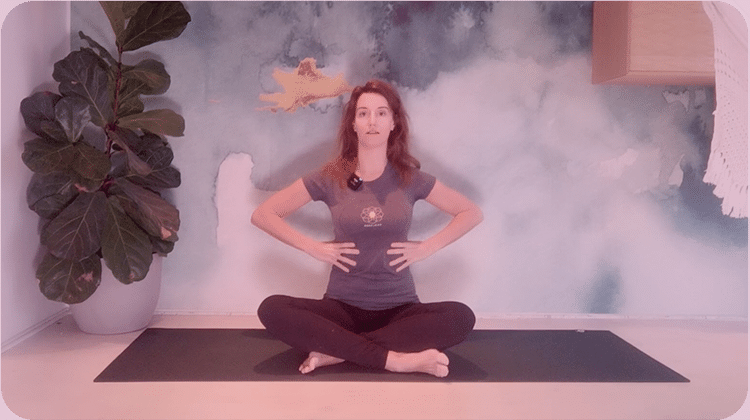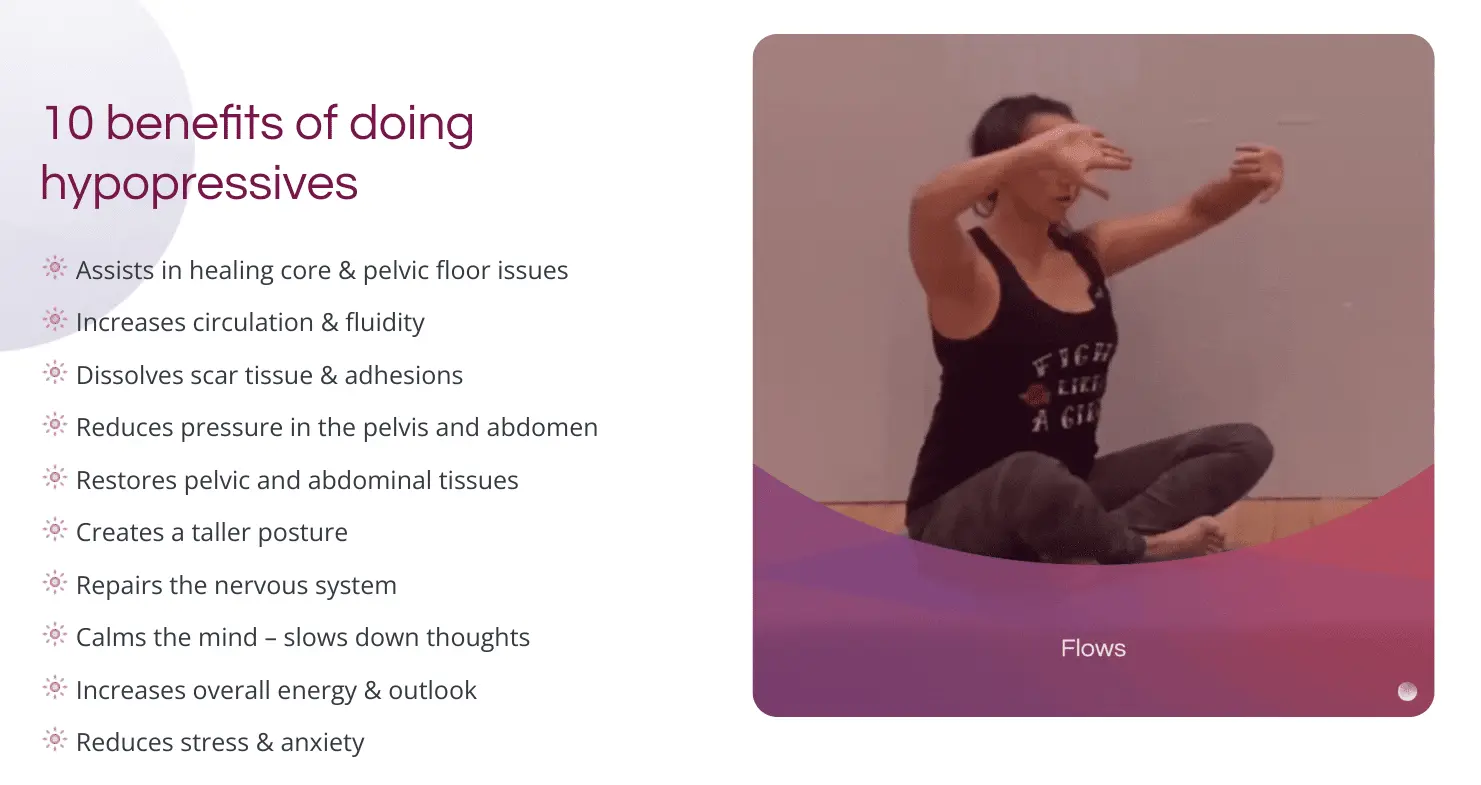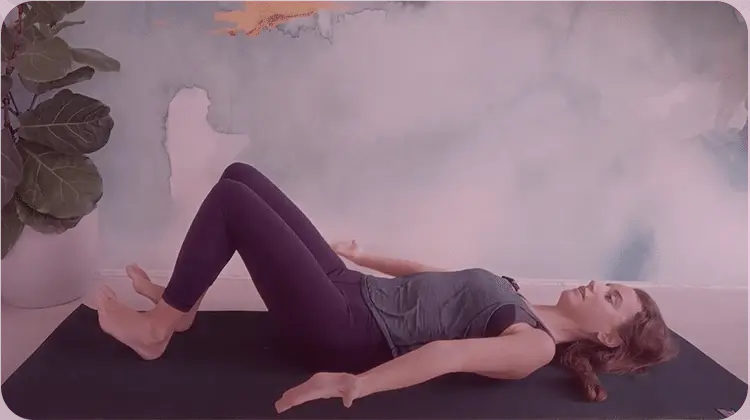Hypopressive exercises: How are they better than other pelvic floor exercises?
- February 1, 2023
- Pelvic Floor

Great question! You are not alone in asking this.
Most women I meet and work with have never heard of Hypopressive exercises before.
So, naturally, they are curious to know how Hypopressives work better than Kegels and pelvic floor exercises recommended by their physios.
A similar question they ask is, “can I continue doing my favorite exercises while working to heal pelvic floor dysfunction?”
Or “is it safe to continue with my normal exercises while practicing Hypopressives?”
Since these are common questions I get and they are related – let’s address them all in this blog!
Sounds good?
How would you describe Hypopressive exercises?
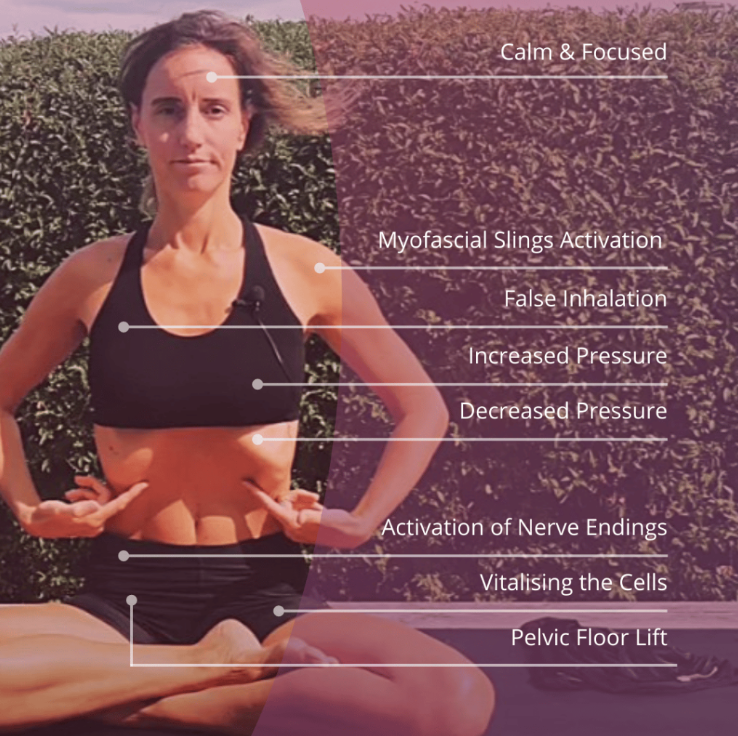
To better answer the question of this blog, let me set the scene first.
Let’s begin by talking about what the word Hypopressives means. The origin of the word Hypo, means “Low” and the word pressive means “pressure.”
So adding these two words together, you get “low-pressure”.
When I first heard the root meaning of this word, I didn’t quite understand how they could help to heal prolapse.
But, later on in my healing journey, after doing tons of research on pelvic dysfunction – I realized the importance of this. Because I discovered that most pelvic floor issues result from excess pressure (and tension) in the pelvic floor.
The research also led me to another discovery. The Kegels exercises I practiced for several months are designed to strengthen pelvic muscles. Not to reduce pressure or tension.
That piece of information made so much sense to me because I did not get any positive results with Kegels.
Anyway, let me get back to describing Hypopressive exercises and how they are done.
Besides being a low-pressure exercise technique, Hypopressives involve postural alignment and breathwork.
To elaborate, Hypopressive exercises focus on improving your body’s alignment, and they teach you lateral breathing and the apnea breath.
Furthermore, the 3 pillars of Hypopressives – postural alignment, lateral breathing, and the apnea breath are done from several different positions.
These positions include sitting, standing, laying down, and the quadruped (all fours) position.
Now that you have a sense of what Hypopressives are – how are they optimal for healing pelvic floor issues?
Let’s get into that now!
What do Hypopressives have that other exercises don’t?

This is one of my favorite topics to talk about.
Hypopressives are such a multi-faceted healing tool. They have numerous benefits, not only for your pelvic floor but for overall healing.
Read more about Hypopressive benefits, in this blog.
But, to understand why they work so well, we must talk about what they were designed to do.
Hypopressives were created in the 1980s in Belgium. The team of health and fitness experts designed them to help postpartum women recover and heal after childbirth.
They wanted to create something better and more advanced than Kegels, which have been around since the 1940s.
Also, as I mentioned earlier, Kegels are strengthening exercises for pelvic floor muscles.
They don’t address the several root causes of pelvic dysfunctions, like excess pressure and tension in the pelvic floor. Or the other root causes including scarring and adhesions in the pelvic fascia.
This is the precise reason why there was a need for exercises like Hypopressives. Kegels are too simple to address these root causes and help women postpartum.
Yet, I must note and make clear that Hypopressives work regardless if you’ve been pregnant or given birth before.
Although this was the creator’s original intention, a pelvic floor is a pelvic floor. So, these exercises work regardless of your gender, your age, or the pelvic symptoms you’re currently experiencing.
As a refresher, here’s a short list of symptoms that fall under the category of pelvic dysfunction.
Common pelvic floor-related symptoms
If you have any of the following conditions or symptoms, then Hypopressive exercises can help you.
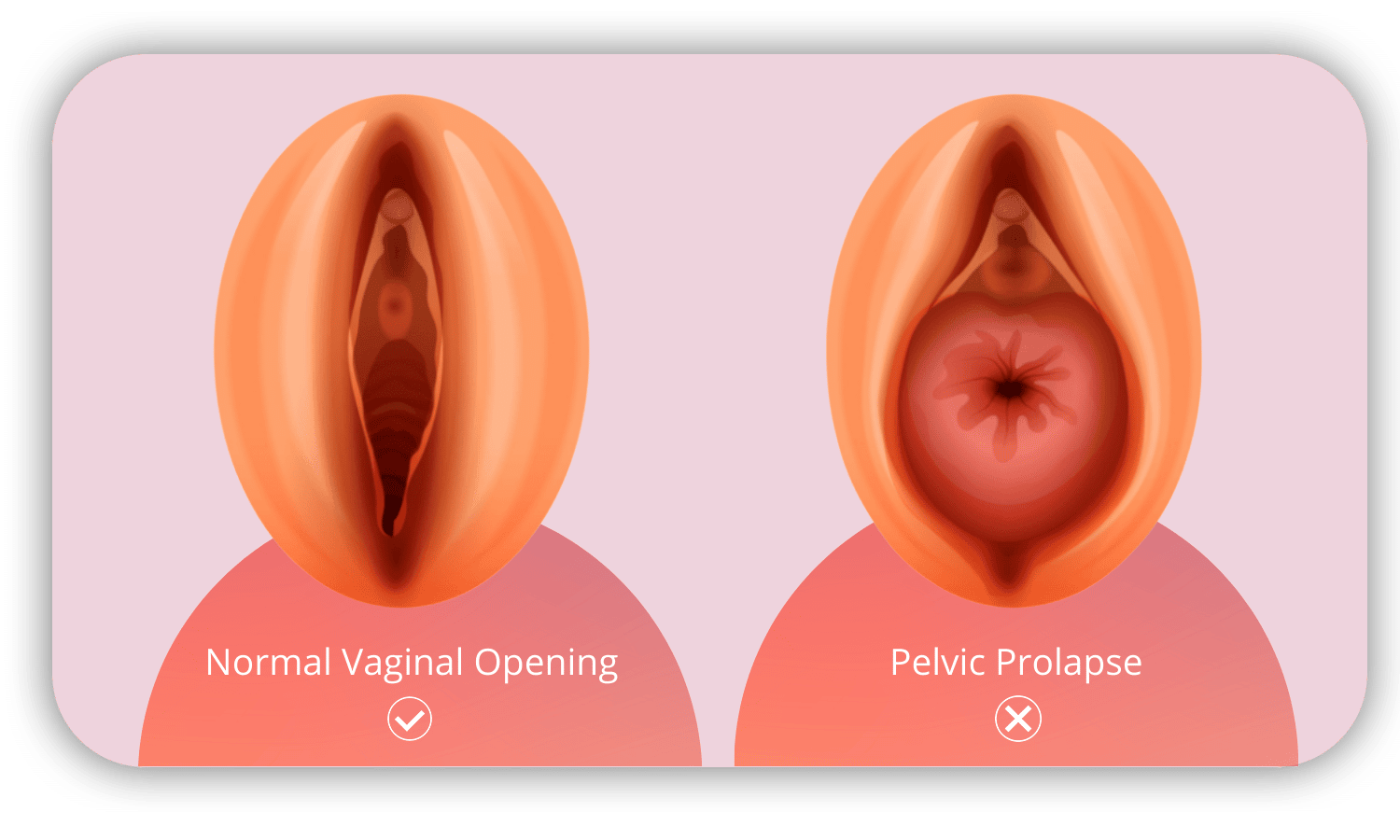
- Prolapse (pelvic organ “dropping out of its natural position)
- Incontinence (urine or fecal leakage)
- Pelvic pain
- Diastasis Recti (abdominal separation)
- Vaginal chafing/dryness
- Vaginal gas “queefing”
- Hemorrhoids
- Cysts/Fibroids
- Low libido
- Constipation
- Lower back pain
In short, Hypopressives have qualities that other pelvic floor exercises don’t. They can:
- Reduce pressure in the pelvic floor
- Help the pelvic muscles relax (instead of creating more tension like Kegels can do)
- Reduce scarring and adhesions in the pelvic fascia by activating the body’s myofascial slings.
- Activate the body’s “rest-digest-and-restore” nervous system – technically known as the parasympathetic nervous system. This allows the body and mind to feel calm, relaxed, and less anxious.
As you can see, Hypopressives can greatly benefit the health of your pelvic floor. Plus, you only need to practice them for 10 minutes a day to experience great benefits.
However, don’t let this small time commitment fool you. While 10 minutes doesn’t sound long in the traditional “exercise sense,” Hypopressives are not normal exercises.
They are powerful and in fact, you don’t want to practice them too often because of their power.
The time of 10 minutes (20 minutes max per day, if you want to do them twice a day) is plenty – results will still come.
Honestly, what helps the most with both short and long-term results is consistency. Consistency and longevity are the names of the game when it comes to real, genuine pelvic floor healing.
Even though Hypopressive exercises are a wonderful way to heal, some women want to do more.
This usually includes doing their favorite exercises or activities like nature walks, gardening, swimming, running, pilates, yoga, or resistance training.
Yet, the question I get often is…
Can I practice Hypopressives and still do my normal exercise routine?
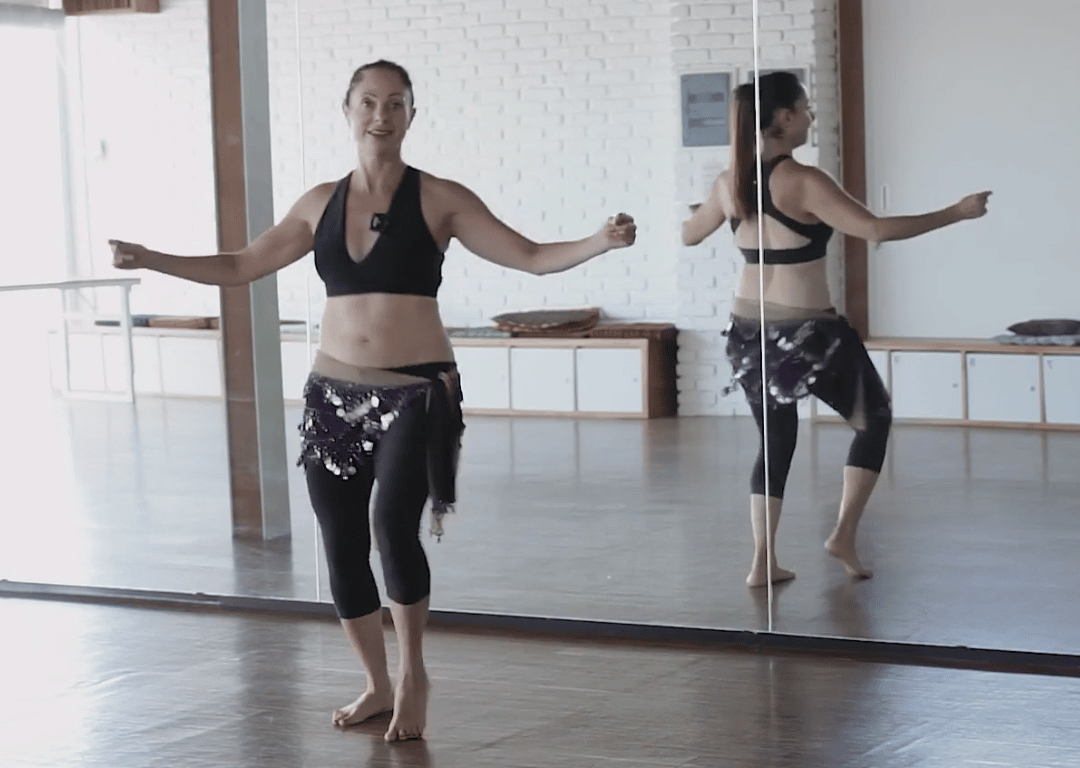
This answer can vary from woman to woman. However, my general guidance is to continue doing what you love unless it’s aggravating symptoms.
If you love taking long daily walks, but you notice symptoms getting worse – try scaling back on the distance.
Or if you’re not able to comfortably walk at all, spend the time you’d typically be walking outdoors with nature. Or perhaps, find another activity you love, but that’s low-impact and relaxing for the body.
Here are some examples of low-impact exercises that still offer movement and activity you might crave.
- Belly Dancing
- Yoga classes, safely designed for pelvic floor issues
- Pilates classes, safely designed for pelvic floor issues
- Pelvic floor relaxation exercises
We offer safe and effective pelvic floor exercises in our Pelvic Floor Dysfunction Program.
But, for those of you who are primarily interested in learning and practicing Hypopressive exercises, keep reading.
Want to try Hypopressive exercises for yourself?

For a more in-depth explanation of why Hypopressive exercises are better than traditional pelvic floor exercises, join our Free Webinar.
My colleague and friend, Abby Lord, is hosting these webinars. She has 10 years of experience as a Hypopressives Trainer and personally used these exercises to heal prolapse, diastasis recti, and incontinence.
Abby will educate you more about this amazing healing method. Plus, she will do a short demonstration, so you can see what Hypopressives are like!
Ready to get your core and pelvic health back?
Then go ahead and sign up for this Free Webinar!
Blog posts you might like:

